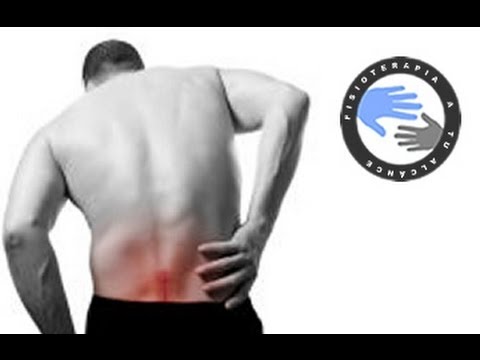PHYSIOTHERAPY AT HOME
Translation: Blanca Martínez Herráez
Low back pain or lumbago is a common disorder involving the muscles and bones of the back. It affects about 40% of people at some point in their lives. Low back pain (often abbreviated as LBP) may be classified by duration as acute (pain lasting less than 6 weeks), sub-chronic (6 to 12 weeks), or chronic (more than 12 weeks). The condition may be further classified by the underlying cause as either mechanical, non-mechanical, or referred pain.
In most episodes of low back pain, a specific underlying cause is not identified or even looked for, with the pain believed to be due to mechanical problems such as muscle or joint strain. If the pain does not go away with conservative treatment or if it is accompanied by "red flags" such as unexplained weight loss, fever, or significant problems with feeling or movement, further testing may be needed to look for a serious underlying problem. In most cases, imaging tools such as X-ray computed tomography are not useful and carry their own risks. Despite this, the use of imaging in low back pain has increased. Some low back pain is caused by damaged intervertebral discs, and the straight leg raise test is useful to identify this cause. In those with chronic pain, the pain processing system may malfunction, causing large amounts of pain in response to non-serious events.
The treatment of acute nonspecific low back pain is typically with conservative measures such as the use of simple pain medications and the continuation of as much normal activity as the pain allows. Medications are recommended for the duration that they are helpful, with acetaminophen (also known as paracetamol) as the preferred first medication. The symptoms of low back pain usually improve within a few weeks from the time they start, with 40-90% of people completely better by six weeks.
A number of other options are available for those who do not improve with usual treatment. Opioids may be useful if simple pain medications are not enough, but they are not generally recommended due to side effects. Surgery may be beneficial for those with disc-related chronic pain and disability. It may also be useful for those with spinal stenosis. No clear benefit has been found for other cases of non-specific low back pain. Low back pain often affects mood, which may be improved by counseling and/or antidepressants. Additionally, there are many alternative medicine therapies, including the Alexander technique and herbal remedies, but there is insufficient evidence to recommend them confidently. The evidence for chiropractic care and spinal manipulation is mixed.
http://en.wikipedia.org/wiki/Low_back_pain
https://www.youtube.com/watch?v=BOZ6VVpDpqY
